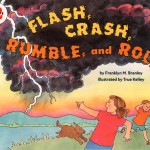
Readers & Thinkers: The 2020 Nobel Prize in Economics. Going, going, gone!
Posted by ludw1086 on Oct 12, 2020 in Readers & Thinkers | Comments Off on Readers & Thinkers: The 2020 Nobel Prize in Economics. Going, going, gone!Dear All:
Well, who won?
The Nobel Prize for Economic Sciences for 2020 was announced today, October 12, 2020. It went to Robert Wilson and Paul Milgrom.
Wilson is 83 years old and was born in Geneva, Nebraska. He obtained his B.A. and D.B.A. from Harvard University. The majority of his work was done while a Professor at Stanford University. He is currently the Adams Distinguished Professor of Management at Stanford University.
Milgrom is 72 years old and was born in Detroit, Michigan. He obtained his B.A. in mathematics from the University of Michigan and his M.A. and Ph.D. at Stanford University. He was also the Ph.D. student of Robert Wilson while at Stanford. His important early work was done while at Northwestern University and Yale University. He is currently a Professor of Economics at Stanford University.
Although I did not predict theory as a field this year, it tends to get more than its fair share of representation. Having said that, Milgrom has been on my Nobel list (and that of many others) for quite a while.
So what did these guys do to make them so Noble?
The Nobel committee wrote that they received the prize “for improvements to auction theory and inventions of new auction formats.”
Although we sometimes forget it, economics is the study of how to allocate scarce resources. Oftentimes, competitive markets are the best way to allocate these resources. As consumers, we see this everyday when we buy a piece of bread, or buy a song on our smart device, or buy a vacation. The price that we buy those goods is determined by the actions of supply and demand for that product, and if all is right, this price will be the best way to allocate those goods.
In markets where producers can produce more goods and consumers can consume more goods, this supply and demand equilibrium may work just fine. However, what do you do if there is only one unique good to buy or sell? Or maybe just a few unique goods to buy or sell? How can one figure out how to allocate that good and at what price? This is where auctions come into play.
An auction is the process of selling a good to a group of potential buyers where the highest bidder determines the price and receives the good. The design of an auction will have an effect on the price paid for the good and on the good’s allocation. Hence, economists have studied the design and aspects of auctions to understand whether they provide the desired results in terms of allocating the good. William Vickrey, Robert Wilson, and Paul Milgrom (as well as many others) studied the properties of different auctions, as well as designed new auctions.
Perhaps the most well-known auction is English auction. This is the one we are most familiar with where the auctioneer yells out the lowest bid price and waits for someone else to outbid them. You’ll remember the words “Going once, going twice, sold!” The Dutch auction starts with a very high price and is lowered until the object is sold. Auctions can have publicly known bids (open bids) or hidden bids (closed bids). There can be variants on all of these parameters. For example, in the sealed bid, second price auction, all bidders would bid secretly for an item and the highest bidder would obtain the item by paying the second highest bid price for the item (revealed after the auction is complete).
What’s the point of doing any research on auctions? First, economists want to know whether an auction will result in an efficient allocation of resources or not. With regards to this, one criteria is that the person who values the object the most actually gets the object (matching). The other is that the seller of the object gets the highest revenue possible for the object (price).
Vickrey assumed that the auctioned objects only had private values (e.g. a baseball signed by Babe Ruth) and showed that many auction systems achieved the same result (i.e. it didn’t matter which one you used).
Vickrey expanded his analysis to auctions where multiple equivalent goods were sold and the analysis became more complicated and he found that different auctions led to different results.
One can also think of auctions that have primarily public values. For example, an auction over a piece of land with oil.
Wilson examined the theoretical issues in an auction when the bidding is over an object that has public values (e.g. land with minerals or oil) but the bidders are uncertain as to this value. He found that in certain cases, bidders would overbid and the winner of the auction might pay more than the good was worth.
Many auctioned items have both private values and public values. For example, a piece of art by Leonardo da Vinci might have a private value to the buyer, but it clearly has some public value at which it could be later sold at. In these cases, the analysis of auctions is more complicated.
Milgrom studied this type of auction with private and public elements. He found that in these auctions, the revenue to the seller varied depending on what auction was used (e.g. Dutch auction versus English auction). He also found that obtaining an expert opinion (i.e. giving the bidders more information) led to higher selling prices to the seller. He also found that English auctions will provide more revenue to the seller than a sealed-bid auction, since valuable information is revealed as different bidders make bids, which lowers the uncertainty about public values for other bidders. Certainly, housing appraisals in real-estate sales comes to mind.
Milgrom also helped (along with others) design auctions for goods that are complimentary. For example, when the government auctions radio frequencies to companies, companies may wish to have continuous coverage in a geographical area leading to the need to have a package of frequencies. Auctions that deal with these issues are Simultaneous Multi-Round Auctions and Combinatorial Clock Auctions.
In summary, Wilson and his student Milgrom studied the theoretical aspects of auctions and how they behaved with respect to efficiency. They also helped to design better auctions.
So what about the Nobel choice?
When I was accepted at Stanford for the Ph.D. program in economics, Paul Milgrom called me to explain the benefits of coming to Stanford (he probably doesn’t remember this). Who knows what might have been?
I contacted Al Roth, who won the Nobel Prize in 2012, to get his opinion and he sent me this link. Al Roth also said “The two of them are some of the greatest theorists living in economics today.” If you want to learn more about Bob Wilson and game theory, this article is interesting.
So is that it?
Auctions are very important to the functioning of our economic system. The U.S. Treasury uses a form of Dutch auction to sell U.S. treasury securities to the public markets. Countries all over the world that have privatized government assets have used some type of auction system. In the United States and the United Kingdom, auctioning of radio spectrum has generated billions of dollars for the government. Prior to auctions, governments would give these rights to companies in a less efficient and troubling manner (e.g. government lobbying). There are auctions on internet platforms all over the world – most notably, eBay and Google.
It should always be remembered that even though these two people won the prize, there are many others who have contributed to the area of auctions and game theory. There are also so many others who have played a role in tweaking theory to make it practical. All of them are important for making the economic system more efficient.
For more information on the winners:
https://www.nobelprize.org/uploads/2020/09/press-economicsciences2020.pdf
From Stanford: https://news.stanford.edu/2020/10/12/stanford-economists-paul-milgrom-robert-wilson-win-nobel-economic-sciences/
Congratulations to Robert Wilson and Paul Milgrom for their pursuit of knowledge, and the other armies of researchers who walked with them!
Happy Columbus Day!
Ludwig
P.S. Feel free to email me your thoughts and indicate whether you wish them to remain anonymous or not.
October 12, 2020






